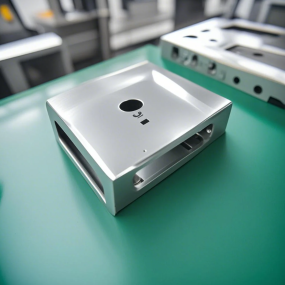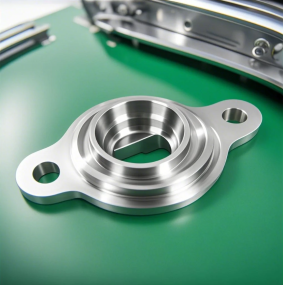Sheet Metal Processing technology refers to the technology of making various special-shaped sheet metal parts through forging, cold stamping, bending, shearing and other processes. With the continuous development of industry, sheet metal processing technology has been widely used in various fields, such as automotive, electronics, construction and other industries. In the process of sheet metal processing, it is necessary to master some technical requirements to ensure the quality and accuracy of products. The editor of sheet metal processing company will introduce the relevant knowledge of sheet metal processing technical requirements separately, including material selection, process selection and equipment requirements, etc. Sheet metal shell processing
 First, material selection
First, material selection
The materials for sheet metal processing mainly include aluminum alloy, steel plate and stainless steel. The materials selected first must meet the design requirements and quality requirements of the product. In the selection of materials, factors such as the cost and service life of the product need to be considered. The quality and thickness of the material have an important impact on the processing and quality of the product, so careful selection is required.
1. The texture of the material should be uniform, and the hardness, toughness, and other properties of the material should also meet the requirements of the product.
2. When selecting materials, it is also necessary to consider the use environment and service life of the processed products in order to choose the right materials.
3. When designing products, if special shapes such as cam contours or keyholes are required, materials with good elasticity need to be selected and pretreated and adjusted to ensure the accuracy and quality of sheet metal processing products.
Second, process selection
Different products need to choose different processes for processing. When choosing a process, you need to consider various factors such as cost, processing difficulty, processing accuracy, etc. Generally, which processing process can be used according to the shape and material characteristics of the product.
1. During cold shearing, it is necessary to consider the hardness, thickness, and material of the steel plate.
2. During the bending process, it is necessary to consider factors such as the thickness, length, and width of the sheet metal workpiece.
3. In punching, factors such as product shape, accuracy, and hole diameter need to be taken into account.
4. In the cold drawing process, factors such as the thickness, hardness, and bending properties of the material need to be taken into account.
5. In cold molding processing, factors such as the selection of molds and molding accuracy need to be taken into account.
III. Equipment requirements
Sheet metal processing requires the use of a range of equipment and tools, including shears, punches, bending machines, extrusion machines, etc. When selecting equipment, factors such as the shape and quantity of the product and the hardness of the material need to be taken into account.
1. Shearing machine: used to cut materials, factors such as the hardness and thickness of the material need to be taken into account.
2. Punching machine: For punching processing, it is necessary to choose a punching machine suitable for the aperture, taking into account the fixing force and stability of the punching machine.
3. Bending machine: capable of bending sheet metal parts into the desired shape, taking into account factors such as the hardness and length of the material.
4. Extrusion machine: It can deform the material into the desired shape, requiring the material‘s ability to deform and cost.
5. Laser cutting machine: mainly used for processing products with high accuracy and small working area.
The above is the content of some sheet metal processing technical requirements. In actual production, more factors need to be considered, such as the technical level of personnel, processing conditions, etc. Only by choosing suitable materials, reasonable processes and equipment, and paying attention to every detail can the quality and accuracy of sheet metal processing products be guaranteed. At the same time, in every link of sheet metal processing, process control, quality monitoring and management are very important. Only by fully considering these issues can high-quality sheet metal products be produced.


 Spanish
Spanish Arabic
Arabic French
French Portuguese
Portuguese Belarusian
Belarusian Japanese
Japanese Russian
Russian Malay
Malay Icelandic
Icelandic Bulgarian
Bulgarian Azerbaijani
Azerbaijani Estonian
Estonian Irish
Irish Polish
Polish Persian
Persian Boolean
Boolean Danish
Danish German
German Filipino
Filipino Finnish
Finnish Korean
Korean Dutch
Dutch Galician
Galician Catalan
Catalan Czech
Czech Croatian
Croatian Latin
Latin Latvian
Latvian Romanian
Romanian Maltese
Maltese Macedonian
Macedonian Norwegian
Norwegian Swedish
Swedish Serbian
Serbian Slovak
Slovak Slovenian
Slovenian Swahili
Swahili Thai
Thai Turkish
Turkish Welsh
Welsh Urdu
Urdu Ukrainian
Ukrainian Greek
Greek Hungarian
Hungarian Italian
Italian Yiddish
Yiddish Indonesian
Indonesian Vietnamese
Vietnamese Haitian Creole
Haitian Creole Spanish Basque
Spanish Basque











